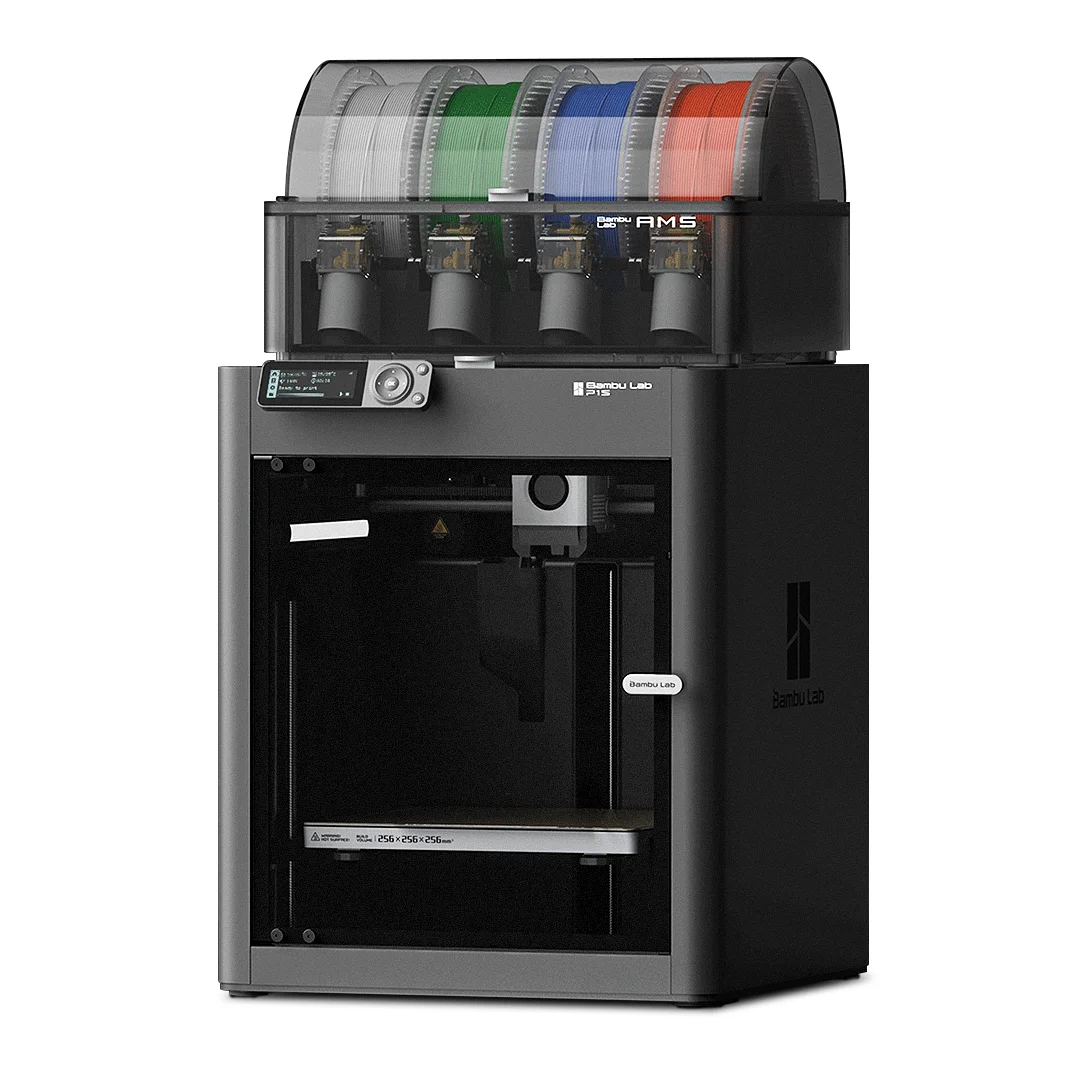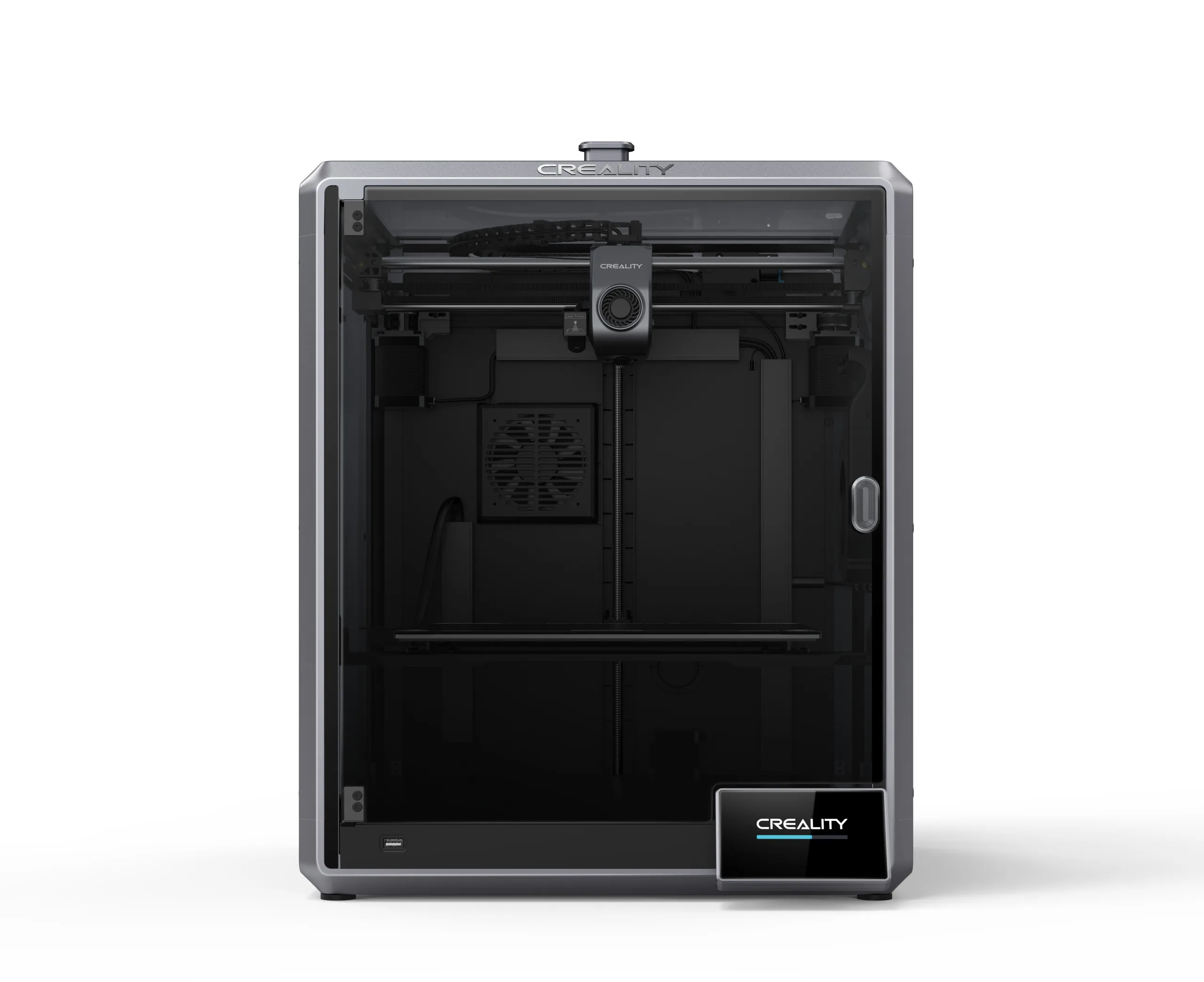Compare P1S vs K1 Max
Comparison between the best 3D printers
Choose the best 3D printer at the best price. The cheapest 3D printers are here.
Buy a 3D printer here with 3D Fila.
 |
 |
|
| Model | P1S[BUY P1S] |
K1 Max[BUY K1 Max] |
| Printing Material | Filament | Filament |
| Buy Filament for Bambu Lab P1S | Buy Filament forCreality 3D K1 Max | |
| Estimated price | $949,00 | $1300,00 |
| Manufacturer | Bambu Lab | Creality 3D |
| Release Year | 2023 | 2023 |
| Print Volume [mm] | 256x256x256 | 300x300x300 |
| Printer Size [mm] | 389x389x458 | 435x462x526 |
| Weight [kg] | 12,95 | 18 |
| Power Loss Recovery | YES | YES |
| Enclosed printer | YES | YES |
| Bed Leveling | Automatic | Automatic |
| Filament End Sensor | YES | YES |
| Bed type | Heated | Heated |
| Power supply system | Direct Drive | Direct Drive |
| Standard nozzle | 0,4 | 0,4 |
| Maximum Nozzle Temperature [°C] | 300 | 300 |
| Maximum Bed Temperature [°C] | 100 | 100 |
| Maximum printing speed [mm/s] | 500 | 600 |
| Filament holder | YES | YES |
| Camera for supervision | YES | YES |
| Recommended filaments | PLA, PETG, TPU, PVA, PA, PA-CF, Nylon, PC | ABS, PLA, PETG, TPU, PA, ASA, PC, PLA-CF, PA-CF, PET-CF |
| Recommended slicers | Bambu Studio, Super Slicer, Cura, Prusa Slicer, Orca | Creality Print, Cura, Simplify, Slic3r, IdeaMaker e outros |
| Maximum Resolution [mm] | 0,1 | 0,1 |
| Processor | Quad ARM A7 1.2 GHz | |
| Display | Touchscreen 5'' | Display touchscreen 4,3'' |
| Power Supply | 350 W | |
| Connectivity | Wifi, Bambu bus, Cartão SD | USB / Wi-Fi / Ethernet |
| Operating systems | Windows, Linux, Macbook | Windows, Mac, Linux |
| Date of registration in the system | 2024-04-11 | 2023-12-01 |
| Release date | 2023 | 2023 |
| Extra features | The Bambu Lab P1S stands out for its out-of-the-box practicality, eliminating the need for manual adjustments with automatic calibrations such as bed leveling and vibration compensation. It features multicolor printing capability through the AMS system, allowing up to 16 colors when connecting four AMS units. With an advanced control algorithm, the P1S offers fast printing speeds without sacrificing quality. Equipped with modern features such as filament end sensor, semi-automatic belt tension, direct extruder, welded frame and all-metal hotend, along with a fully enclosed chamber, the P1S promotes a superior printing experience, supporting a wide range of materials. | The Creality K1 Max stands out as a fast Core XY 3D printer with a large build volume of 300 x 300 x 300 mm. It is fully enclosed and equipped with AI sensors to prevent print failures. This model has a smooth and flexible PEI build platform, and uses an automatic leveling system with LIDAR, as well as a filament run-out sensor. LAN, Creality Cloud and USB Flash Disk connectivity are available, as well as a 4.3-inch touchscreen interface. The K1 Max is robust, weighing in at 18 kg, and includes an AI camera and limited version of the Klipper firmware. Its motion system is solid and the printer is efficient with high-temperature filaments, but it is not silent. Assembly is 99% complete, requiring only minor adjustments before use. |
| Support for multiple colors and materials (AMS and CFS) | YES | NO |
Notes * |
||
| Cost-benefit | 7 / 10 | 7 / 10 |
| Hardware | 6.4 / 10 | 4.8 / 10 |
| Tela | . | . |
| Print volume | 4 / 10 | 4 / 10 |
| Performance | 4 / 10 | 5 / 10 |
| [BUY P1S] | [BUY K1 Max] |
Conclusion |
| In comparing the Bambu Lab P1S and Creality 3D K1 Max, both printers released in 2023 offer a range of advanced features suited for different user needs, yet they also have their distinctive strengths and weaknesses. The Bambu Lab P1S shines with its versatility, enabling multicolor printing through the AMS system and supporting a wider variety of filament materials. Its focus on user-friendly features, such as automatic bed leveling and a robust design, provides an exceptional out-of-the-box experience. The P1S is tailored for those who prioritize a seamless setup and high-speed printing without compromising quality, making it suitable for users interested in a broad spectrum of applications. In contrast, the Creality K1 Max boasts a larger print volume and is designed for speed, making it a great choice for more industrial applications or projects requiring larger outputs. Despite some robust features, such as AI sensors to prevent printing failures and a good selection of connectivity options, it offers less versatility in terms of multimaterial printing. In terms of cost, the P1S provides a better cost-benefit ratio while maintaining comparable performance, making it a more economical choice for those looking for flexibility and ease of use. The K1 Max, though priced higher, may be justified for users who require its specific advantages like larger build volume and speed. Ultimately, if the goal is to have a practical, user-friendly solution for a variety of printing needs with excellent support for multiple colors and materials, the Bambu Lab P1S stands out as the better option. However, for users who can leverage its larger build volume and speed for specific larger projects, the Creality K1 Max remains a strong contender. |

